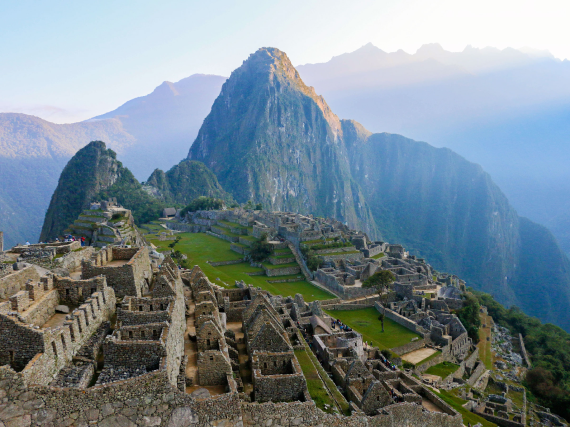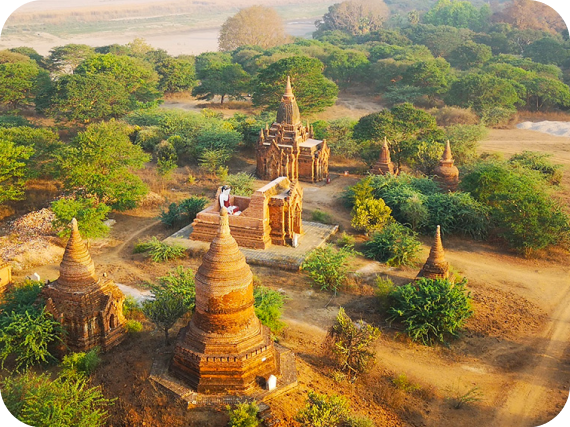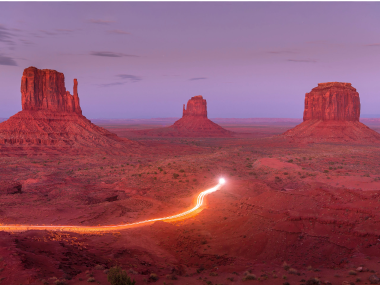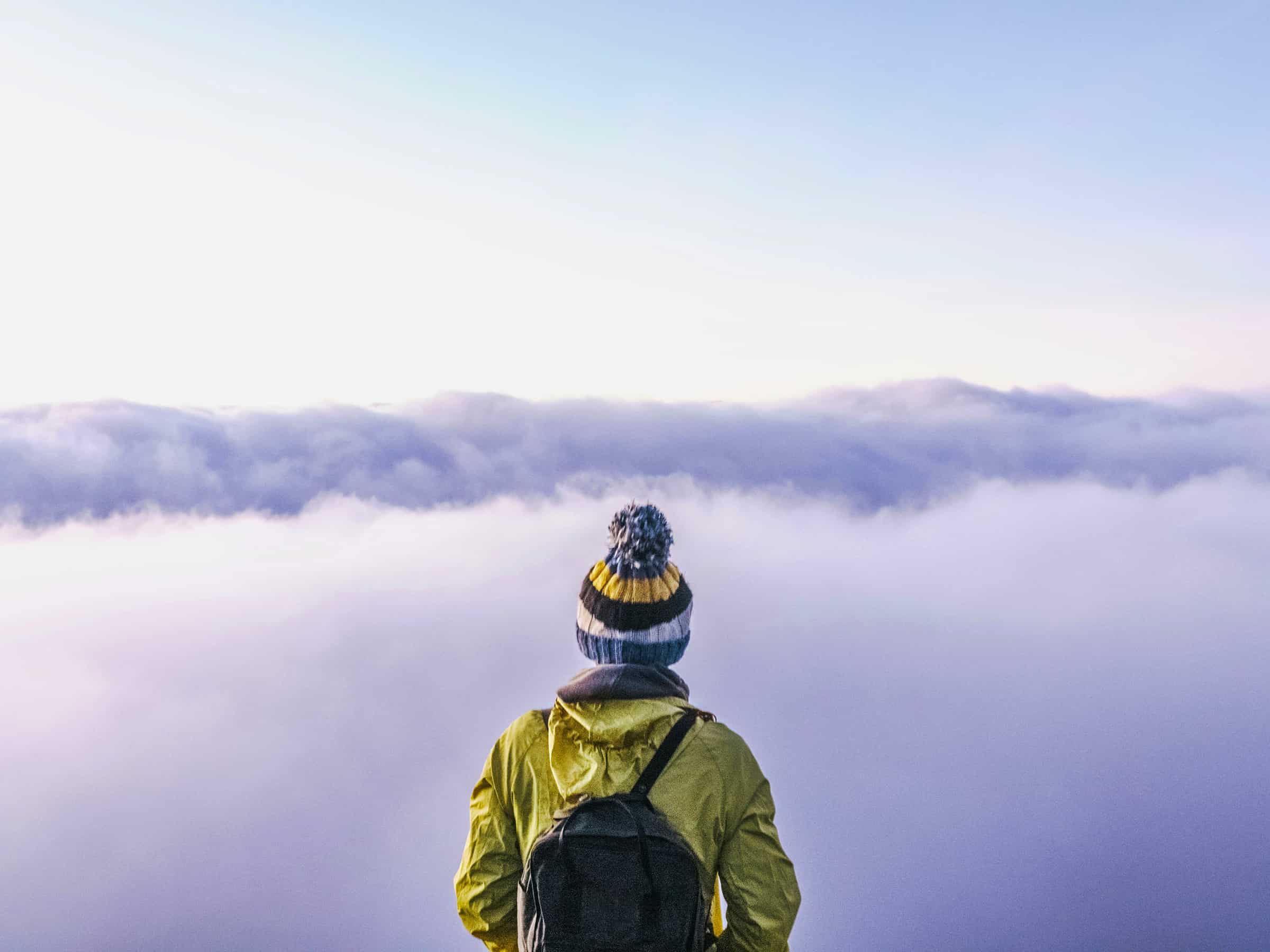From the vast wilderness of Alaska to the islands of Hawaii, the 50 states occupy an area of around 3.8 million square miles. Together, they showcase the country’s storied history, cultural traditions, and iconic natural landmarks that are like no others on Earth. Whether you’re interested in outdoor pursuits, heritage monuments, small-town living, or bustling metropolises, join us on a journey around the 10 largest U.S. states by area.
10. Wyoming
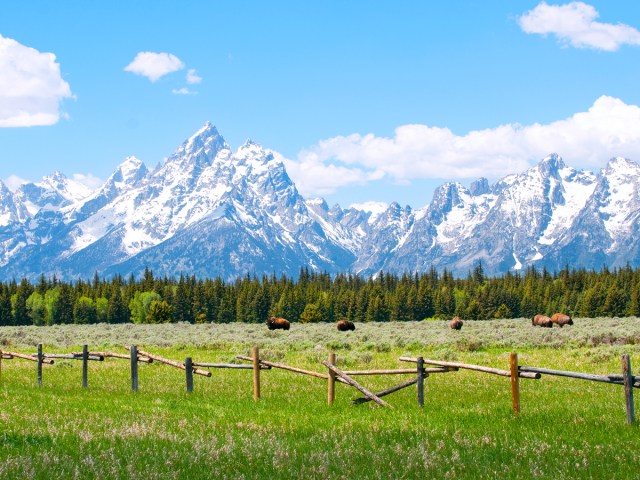
Area: 97,813 square miles
With the rugged beauty of the Rocky Mountains’ Teton Range and Wild River Range, not to mention prairies filled with free-roaming bison and dusty cowboy towns, Wyoming is the epitome of a pioneer state. Archaeological discoveries provide evidence of 12,000 years of prehistoric life here, though it wasn’t until 1890 that Wyoming officially became the 44th state.
Wyoming was once a place inhabited by nomadic tribes including the Arapaho, Cheyenne, and Shoshone peoples, who are collectively known as the Indigenous peoples of the Great Plains. When John Colter, a member of the Lewis and Clark expedition, arrived in the region during the winter of 1807 to 1808, he stumbled upon a collection of geysers and waterfalls that were later incorporated into Yellowstone National Park, the world’s first designated national park.
9. Oregon

Area: 98,379 square miles
Oregon stretches from the Pacific Ocean in the west into the Blue Mountains and the Cascade Range in the east. The 33rd state (declared in 1859) is often known as the “Beaver State.” This moniker dates back to the colonial period, when fur trappers discovered the profitability of the animal’s fur for making hats. While their use for economical purposes is a relic of the past, beavers still play a vital role in creating habitats for fish and other wildlife in Oregon today.
Stretching through the state is the western section of the Oregon Trail. Between the 1840s and 1880s, thousands of pioneers followed this wagon road from Missouri to the Willamette Valley in search of a new life. Today, some of the state’s biggest lures are the coastal Highway 101, Crater Lake National Park, and the hip, brewery-loving city of Portland.
8. Colorado
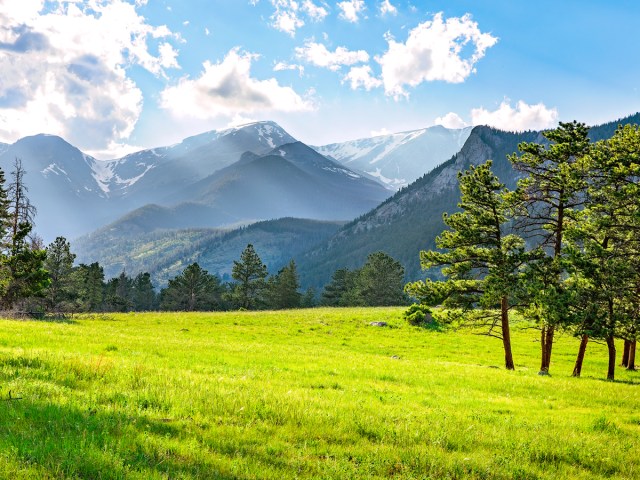
Area: 104,094 square miles
The Centennial State became the 38th state in 1876, a century after America was formed. This region of great plains, arid deserts, deep canyons, high plateaus, and rugged mountains was originally the home of tribes such as the Arapao, Cheyenne, and Ute. Droves of pioneers arrived to seek their fortune during the Colorado gold rush between 1858 and 1861. The dramatic increase in the population led to the creation of the official Colorado territory.
Home to the tallest peaks of the Rocky Mountains, Colorado is big on natural wonders. It boasts four national parks within its borders. The state is also a skiing and snow sports mecca, with thousands of powder hounds hitting the slopes at Aspen, Breckenridge, and Vail every winter. Colorado’s capital, Denver, is known as the “Mile High City,” due to its elevation; it blends outdoor recreation with a superb art, music, and sports scene.
7. Nevada
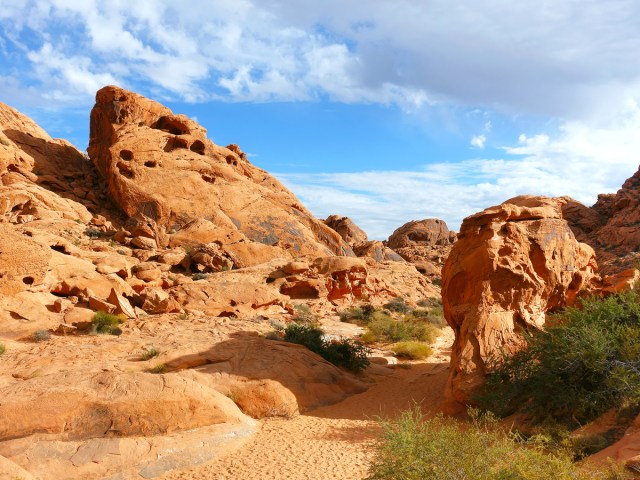
Area: 110,572 square miles
Slightly larger than the country of New Zealand, Nevada is almost entirely covered by the Great Basin Desert. Heavily influenced by the Comstock Lode silver boom that began in the 1850s, the state rose to fame as one of the world’s entertainment capitals. At its heart is Las Vegas, aka “Sin City,” which glistens with the neon-lit casinos, luxury resorts, and nightclubs of the Strip.
Beyond the bright lights of Vegas, Nevada boasts iconic natural landmarks including Red Rock Canyon and Lake Tahoe. There are also eerie ghost towns such as Rhyolite, as well as Area 51, which is notoriously linked to UFO sightings and extraterrestrial activity. And Hoover Dam, on the Nevada-Arizona border, is a feat of modern engineering offering guided tours and views over the Colorado River.
6. Arizona
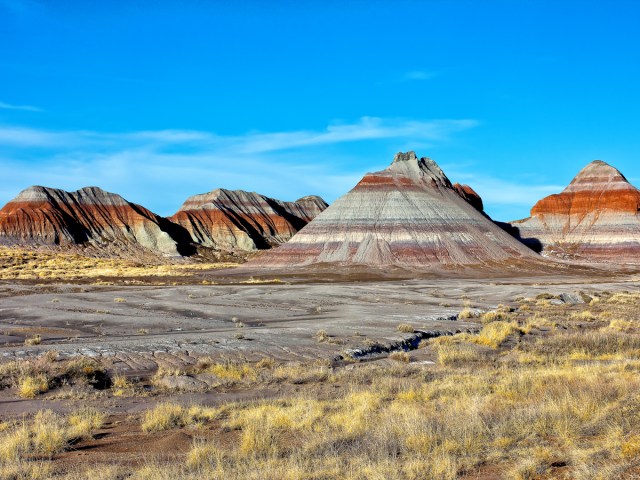
Area: 113,990 square miles
Bathed in near-constant sunshine, Arizona was once part of Spanish and Mexican territories before it was ceded to the United States in 1848. Undoubtedly the state’s star attraction is Grand Canyon National Park, which gives the state its official nickname. This mile-deep wonder carved by the Colorado River is one of the deepest canyons in the country.
However, the Grand Canyon only scratches the surface of the magnificent natural sights in Arizona. Elsewhere in the state, cacti rise above the Sonoran Desert, and fossilized trees decorate Petrified Forest National Park. For urban adventures, Phoenix and Scottsdale blend first-rate art, cowboy culture, and upscale spas. And finally, the state’s section of historic Route 66 is tailor-made for an all-American road trip.
5. New Mexico
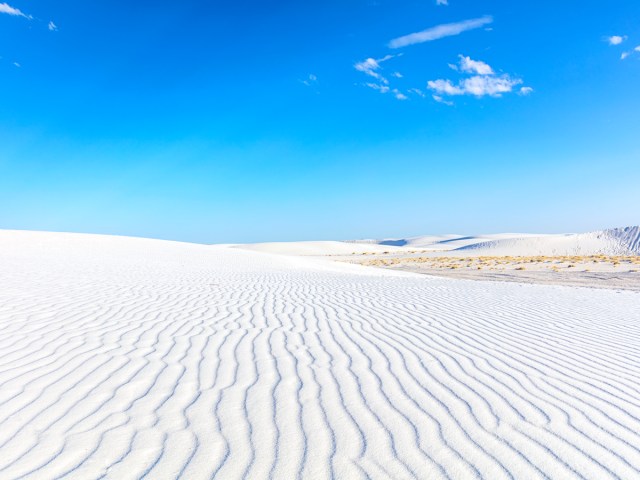
Area: 121,590 square miles
Stretching north from the border with Mexico, New Mexico is made up of four main regions: the Basin and Range region, the Colorado Plateau, the Great Plains, and the Rocky Mountains. Amid this geographical diversity are many natural wonders, including the gypsum sand dunes of White Sands National Park and the underground caves of Carlsbad Caverns National Park.
New Mexico’s 19 Native American Pueblo tribes greatly shaped the state’s art and culture, particularly in Acoma Pueblo and Taos, where historic adobe buildings abound. Meanwhile, a trip to Bandelier National Monument offers the chance to see ancient pueblo dwellings and petroglyphs carved into rock cliffs. The state capital, Santa Fe, boasts a unique mix of art, cowboy heritage, and cuisine — which is frequently smothered in the state’s signature spicy red and green chili sauce.
4. Montana
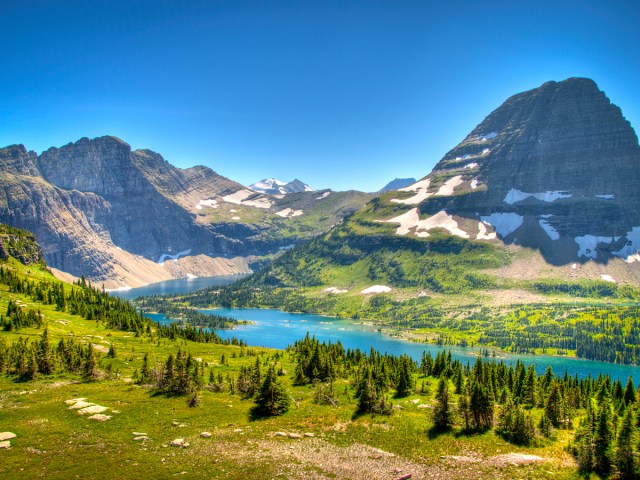
Area: 147,040 square miles
Montana is “Big Sky Country,” a state synonymous with soaring mountains that spill over into wide-open spaces and endless plains. But long before it became known to the Lewis and Clark expedition, the Blackfeet, Crow, and Cheyenne tribes inhabited the region.
Fur trappers arrived in present-day Montana in the early 1800s, followed by gold prospectors in the 1860s. In 1876, the Sioux and Cheyenne peoples defeated the troops of General Custer at the Battle of the Little Bighorn, and today, the Little Bighorn Battlefield is a memorial to this poignant moment in Native American history. Elsewhere in Montana, outdoor enthusiasts can discover a bevy of activities — from 700 miles of hiking trails that crisscross Glacier National Park to world-class skiing at Big Sky Resort and Whitefish Mountain.
3. California
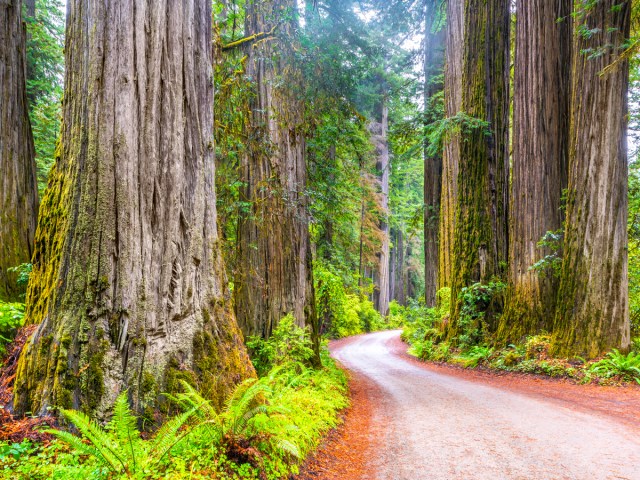
Area: 163,695 square miles
Almost twice the size of the United Kingdom, California is filled with legendary attractions and cultural landmarks. Native Americans resided in this coastal state for around 13,000 years prior to the arrival of European colonists in the 1530s, and California was declared as the 31st state in 1850. A major contributing factor to its statehood was the discovery of gold at Sutter’s Mill in 1848.
The Golden State boasts 840 miles of coastline dotted with major cities like San Francisco and Los Angeles and blissed-out surf towns, including Encinitas and Huntington Beach. Inland, Napa Valley lures wine connoisseurs, while Death Valley is both the lowest point in the country and the hottest place on Earth. And at Redwood National and State Parks, visitors can walk beneath some of the world’s tallest trees.
2. Texas
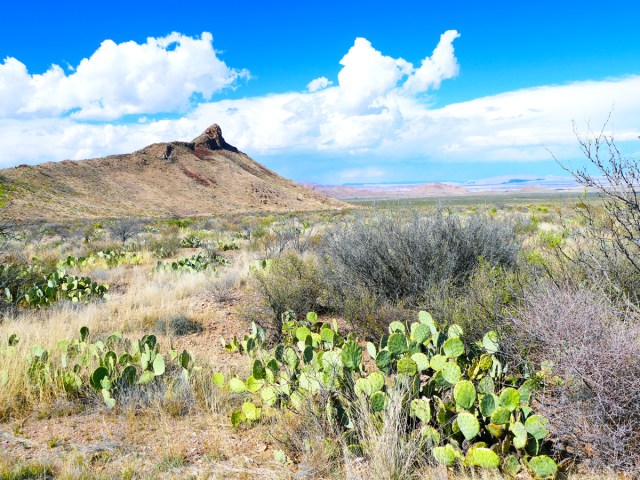
Area: 268,596 square miles
Texas is both the second-largest state by area and the second-most-populous state in the country. In fact, the Lone Star State is larger than every European country (except Russia) and has a population similar to that of the entire nation of Nepal.
One reason behind the state’s size is that it was already an independent republic when it joined the Union in 1845, and thus, it was not divided up. Today, driving nonstop from east to west across Texas’ widest span of 773 miles would take around 11 hours. Anyone doing so would witness a landscape shifting from far-reaching prairies and grasslands to semi-arid plains, the Chihuahuan Desert, and high-altitude areas like the Davis and Franklin mountains.
Popular activities around the state include exploring Big Bend National Park and experiencing cowboy culture at Houston Livestock Show and Rodeo. Pristine beaches and watersports also await along the Gulf Coast, notably on South Padre Island.
1. Alaska
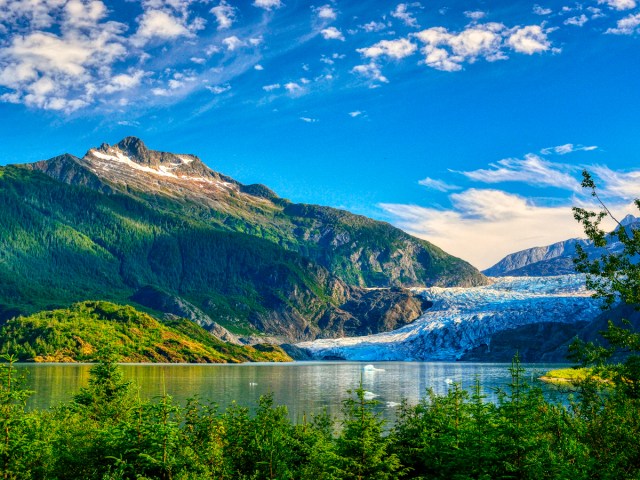
Area: 665,384 square miles
With an area bigger than California, Montana, and Texas combined, Alaska is by far the largest state in the U.S. This vast wilderness of glaciers, snowy peaks, and tundra occupies the northwestern corner of North America. Contrary to its size, Alaska is the third-least-populous state in the country. Most residents live in and around the urban centers of Anchorage, Fairbanks, and Juneau.
The first settlers arrived in present-day Alaska approximately 15,000 years ago. In 1867, the United States purchased the territory from Russia. The Klondike gold rush of the late 1800s saw 100,000 prospectors come to seek their fortune, significantly expanding the state’s population. Alaska is also home to the 10 tallest mountains in the United States; several dominate the landscapes of protected areas like Denali National Park and Glacier Bay National Park.
More from our network
Daily Passport is part of Inbox Studio, which publishes content that uplifts, informs, and inspires.

